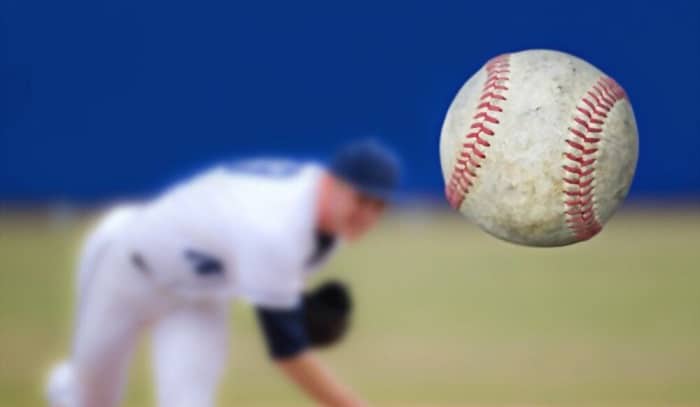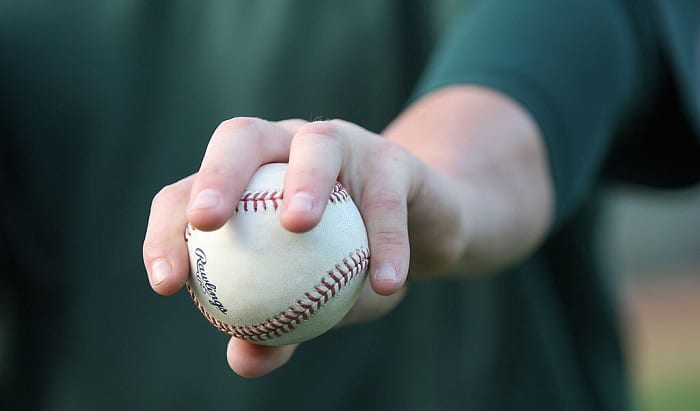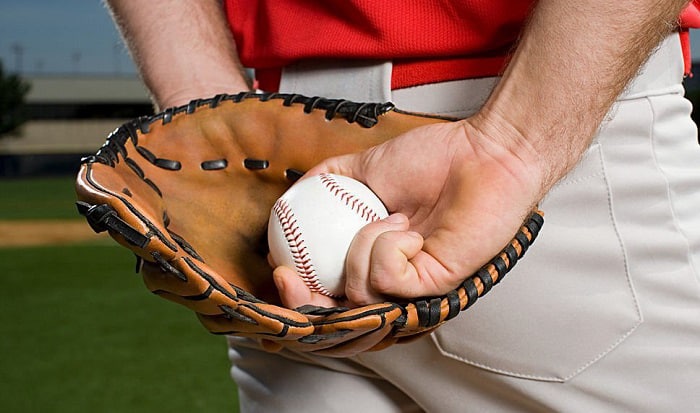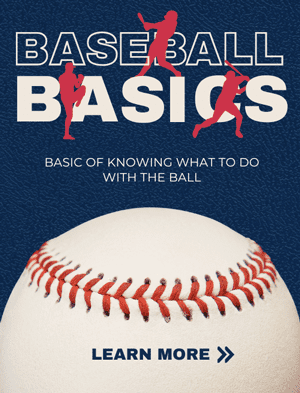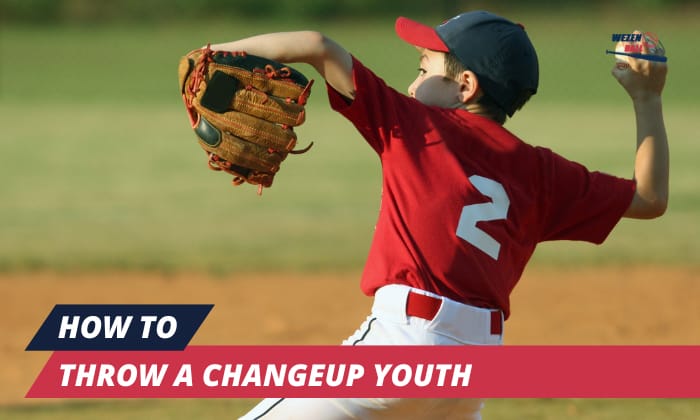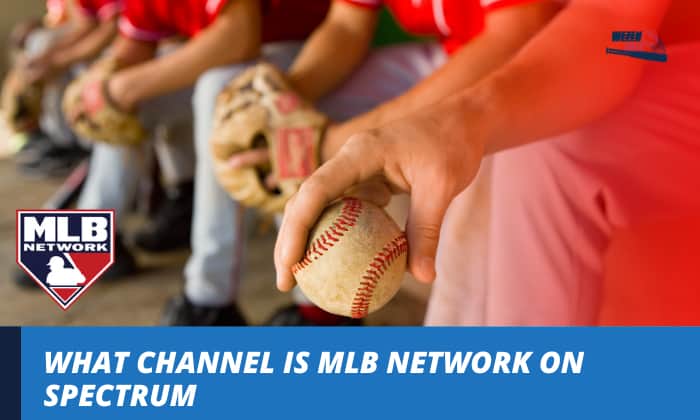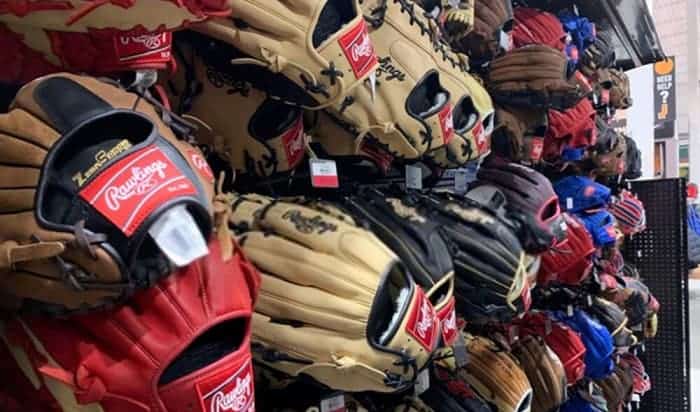Pitchers use different strategies when throwing a ball in baseball. A pitcher’s main job is to deceive batters by derailing their timing and balance so they miss a strike, hit a foul ball or simply end up with a bad hit.
To do so, pitchers use various techniques to alter the speed and direction of the ball. Among them is the changeup, one of the most deceptive pitches in baseball. Learn how to throw a change up in baseball here.
Contents
What is a Changeup in Baseball?
A changeup is a pitch in baseball that looks like a fastball but is much slower by around 8-15 miles per hour. It is thrown with the same arm motion, which is what deceives the batter into thinking that a fastball is approaching.
Except by judging the pitcher’s movements, batters are not able to assess what type of pitch is coming from 60 feet away. They’ll often confuse a changeup for a fastball because both pitches are thrown the same way and take on an identical path.
Fastballs usually travel a minimum of 90 miles per hour while changeups typically have a speed of only 70 to 80 miles per hour. The speed difference is what causes the batters to mess up their timing or go off-balance when hitting the ball.
Why Do Players Throw a Changeup Pitch in Baseball?
The changeup is a popular pitching strategy used to upset a batter’s timing so they hit the ball earlier than they should. As a result, the batter either misses or hits a foul ball. Changeups can alter the course of a game in certain scenarios.
- For instance, when pitchers throw a good changeup and the batter makes contact with the ball, this will mostly result in a pop fly or a foul ball. Both types of hits are easy to catch and will instantly put out the batter.
- Throwing a change up when a batter already has two strikes also raises the probability of putting them out. If the catcher captures a missed changeup during the third strike, this will result in a strikeout.
Ironically, a changeup is one of the easiest pitches to hit when detected by a batter early on. It is among the slowest pitches in baseball and is a breeze to hit compared to a fastball if timed correctly.
Different Ways to Throw a Change Up in Baseball
The secret to throwing a good changeup starts with the right grip on the ball. Different baseball grips can vary ball speed, create spins, and alter trajectory as the ball approaches the hitter.
A changeup has all these elements, a huge chunk of which relies on how pitchers grip the ball.
For this reason, one must first learn how to grip a change up before throwing one. You can grip a changeup in so many ways. There are no hard and fast rules in throwing a changeup except that the pitch is delivered with the same arm movement as a fastball.
While there are different change up grips baseball techniques employed by pitchers, all of them focus solely on creating more friction between the ball and the throwing hand.
When throwing fastballs, pitchers typically use a soft and light grip since less friction adds more speed and velocity to the pitch. When they hold a change up, however, pitchers switch to a firmer grip with the ball resting deeper in the palm.
You’ll come across various types of changeups used by professional baseball players, some of which will take years of practice to master. We’ve put together a list of different changeups used in youth, minor and major baseball leagues for you to learn and explore.
- Three finger changeup
- Hold the ball with your index, middle and ring fingers resting over the top of the ball.
- Next, place your thumb and pinky finger directly on the underside so the ball is resting deeply on the palm of your hand.
- Wiggle the ball so it feels comfortable in your hand. This also helps distribute force evenly across the ball.
- Throw as you would a fastball while pronating your hand upon release to create some spin.
- Tip: The three finger change-up is a good starting point for neophyte pitchers. It’s also an easy tactic to add to any pitching repertoire, especially for players with small hands.
- Four finger changeup or palm ball
- Grasp the ball with your whole hand and position the middle and ring fingers evenly across the upper center.
- Place the index and pinky fingers on one side of the ball right across the thumb on the opposite side to achieve more balance.
- Make sure the distance between all fingers is approximately the same. The ball must rest deep in the palm and your grip should appear like you’re choking the ball.
- With a bit of pronation upon release, throw with the same arm motion and speed as a fastball—the friction created by the grip will take care of slowing the ball down.
- List item
Tip: Apply pressure evenly when gripping the ball and open your hands wide upon release to throw a good changeup. This ensures your fingers don’t touch the seams of the ball and affect its trajectory.
- Circle changeup
- Create a circle with your thumb and index finger touching each other at their tips on one side of the ball. (The tips can overlap if you have large hands.)
- Spread the three remaining fingers evenly across the other side of the ball to secure your grip.
- Make sure the ball nestles comfortably in your hand close to the palm without you needing to add pressure to retain the circle.
- Throw with the same movement and speed as a fastball but with slight pronation so that the circle is pointed directly towards the strike zone upon release.
- Tip: Hand size and finger length matter when throwing changeups. Because the ball rests deeper in the palm, it will be difficult to throw a circle change with small hands. Small-handed players can opt for the C-change, which is a slight variation of the circle changeup.
- Vulcan changeup
- Split your middle finger and ring finger and position them next to the outer seams on the upper end of the ball.
- Place the index finger below the middle finger and the pinky finger below the ring finger. Use your thumb to support the lower end of the ball.
- Be sure to grip the ball firmly so it is tucked away into your hand just above the palm.
- Throw the ball like a fastball with a bit of downward pronation and your palm facing forward upon release.
- Tip: Don’t attempt to guide your pitch with variations in arm speed or elbow movement. Just throw a Vulcan like a fastball and the grip will do its job.
- Star changeup
- Grip the ball evenly in such a way that your fingertips resemble the five tips of a star.
- Make sure the three middle fingers are positioned on the upper part of the ball while the thumb and pinky finger are on the bottom curve of the ball.
- Check that the ball isn’t sitting too deep in your palm but rather just above its most fleshy part.
- Release the ball as you would a fast ball right in front of you at shoulder level. You can add some downward movement on the inner side of the ball for some sinking action.
- Tip: The star changeup is the most basic among all changeups. Coaches often teach this type of pitch when conducting how to throw a changeup youth drills since it’s the easiest to learn.
Changeups work like curveballs in such a way that the ball takes on a downward spin as it is released from the pitcher’s hand. However, batters will be able to detect curveballs simply by judging the arm movement of the pitcher.
When pitchers throw a curveball, the arm is at a 45-degree angle to the side rather than above the shoulders. The palm is also on the outer side, which is a dead giveaway that a curveball is coming the batter’s way.
In contrast, changeups are thrown with the arm directly above the shoulders and the palm in front. This is exactly how fastballs are thrown and is what confuses the batter between fastballs and changeups.
Conclusion
Most hitters can tell what type of pitch they’re dealing with except for changeups. Changeups are meant to deceive batters into thinking a fastball is coming their way and upsets their timing or throws them off balance.
Changeups are valuable additions to your pitching arsenal. Some are easy to learn while others take years to perfect. It is often said that pitchers can dictate the outcome of a baseball game. Knowing how to throw a change up in baseball can give you more control with every pitch.

A powerful swing and the ball is flying across the field, just one hit, and we might never forget the thrill it brings. I do not know about you, but I never do. Every baseball game is the chance to compete with others and cooperate with your teammate. It is among my biggest passions.



